©2025 ZenABM - All Rights Reserved.
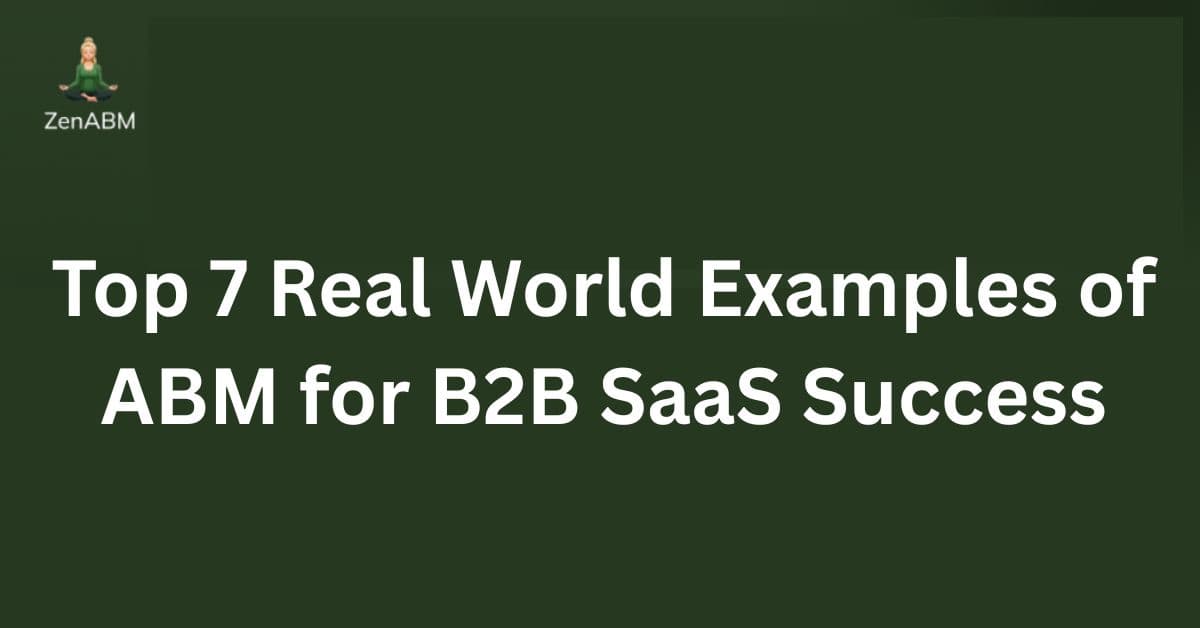
In this article, I unpack seven real-world B2B examples of ABM, focusing on what made them work in practice.
For every example, I have highlighted the standout tactics and the results they produced.
Read on, borrow the play that fits your B2B motion best, and see how ZenABM can help you ace your ABM approach.
How ZenABM Amplifies Your ABM Results:
Choose the tactics that fit your goals and use ZenABM to amplify outcomes.
Snowflake, a cloud data platform, executed one of the most cited examples of ABM using premium direct mail paired with rich digital experiences.
They combined highly personalized mailers with targeted online content.
The team performed deep research on 200 large accounts such as Walmart, Kaiser, and JPMC, then built custom data visualizations and reports tailored to each account’s objectives. Think retail analytics for Walmart and healthcare insights for Kaiser.
Packages were shipped as elegantly printed booklets or on premium tablets, showcasing projected ROI and the specific solutions Snowflake could deliver.
With high-touch mailers and meticulous online tracking working together, Snowflake reported that 85 percent of packages were opened, and the program sourced more than 50 million dollars in pipeline from just 200 accounts.
Put simply, every account touched represented a five- to six-figure opportunity.
Key tactics from this example:
Document each target’s pains and KPIs, then craft bespoke collateral like charts, ROI tools, and case studies that speak directly to those needs.
Use premium formats such as tablets, hardcover booklets, or branded kits so the package stands out and feels worth the recipient’s time. Ensure the projected deal value justifies the spend.
Embed QR codes or unique URLs to track engagement. For instance, Snowflake’s kits drove recipients to a tailored welcome page or demo sign-up, alerting sales for timely follow-up.
Arm reps with account briefs and next-best-actions. Marketing and SDRs coordinated outreach the moment a prospect interacted, which improved conversion rates.
By pairing handcrafted content with data-backed personalization, Snowflake’s ABM program delivered standout engagement and pipeline.
You can adapt this by dialing down costs while preserving the research depth, personalization, and measurement.
Salesforce, known for CRM and cloud software, executed a healthcare-focused program driven by intent data.
They pinpointed hospitals and health systems actively researching CRM solutions, then layered outreach that included personalized email sequences, invite-only executive webinars, and premium content.
Messages referenced each hospital’s priorities, such as patient experience and compliance.
The outcome was strong. Salesforce attributed a 32 percent pipeline increase to these healthcare accounts.
Steps and tactics you can lift from Salesforce:
Use platform data or third-party sources to identify in-market companies that are consuming healthtech content or visiting EMR pages. You can also pilot campaigns across TOFU, MOFU, and BOFU to spot accounts actively engaging with your ads. Diversify creative by value proposition or feature to reveal what each account cares about most.
You can execute this using ZenABM.
It pulls company-level impressions for every campaign and campaign group:
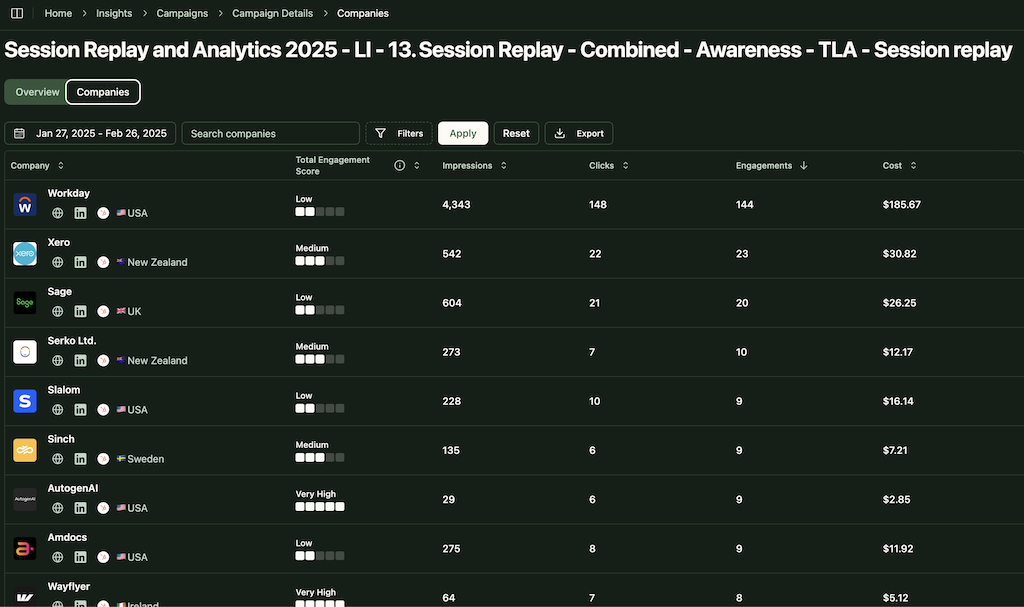
Then it syncs the same engagement data to your CRM so sales can act on it quickly: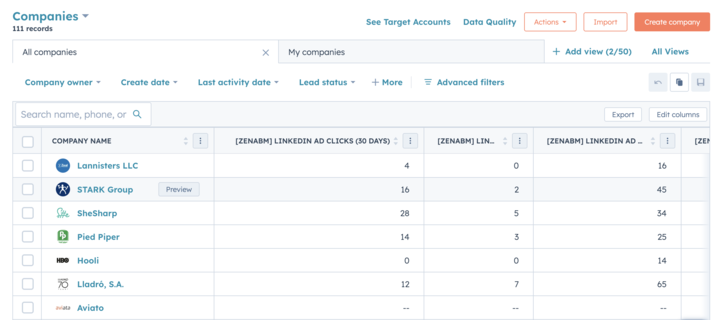
You can also tag each campaign by the intent it promotes. ZenABM will group accounts that respond to the same message:
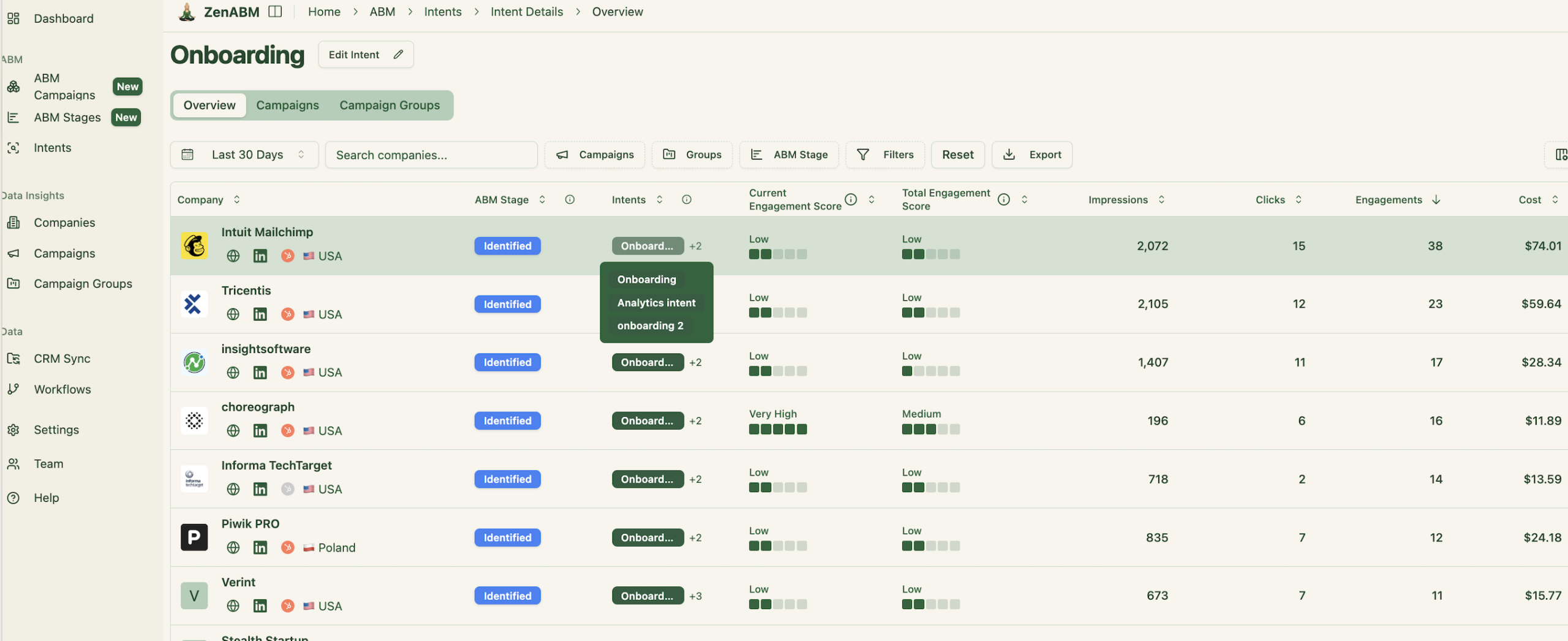
This way, you can see which companies are in market for the exact solution you provide.
Send campaigns that reference the account by name and link to relevant case studies from the same industry.
Host invite-only roundtables or briefings for decision makers. Salesforce curated executive sessions on healthcare technology trends and positioned them as exclusive opportunities.
After every marketing touch, coordinate fast sales follow-up. A webinar RSVP or whitepaper download should trigger a tailored outreach sequence.
By focusing on a single vertical and aligning sales with marketing at every step, Salesforce warmed up previously cold accounts. Personalization at each stage fueled the 32 percent pipeline lift.
Any SaaS team can reproduce this by narrowing to an industry, applying intent data to selection, and layering channels across email, events, and direct outreach.
Adobe shifted from broad demand generation to focused account motions for large enterprises.
They prioritized Fortune 500 companies and used AI and predictive analytics to guide targeting and messaging.
With live engagement data across web and campaigns, Adobe delivered communications personalized at the account level.
For example, if a CMO at a target bank consumed retail content, the next touch was a note highlighting Adobe’s retail analytics capabilities.
Results followed. Adobe reported a 60 percent jump in deal size and a 40 percent increase in retention among these accounts.
Key tactics in Adobe’s approach:
The lesson is clear. Use predictive models to select targets and tailor the journey to the account’s real behavior.
Engagio, now part of Demandbase, championed coordinated account orchestration.
Rather than running channels in silos, they mapped a unified plan for each account, sequencing messages across LinkedIn, email, direct mail, events, and sales calls.
A typical flow might start with an SDR’s LinkedIn message, followed by a personalized email, then a tailored mailer, then a VIP event invite, all reinforcing one theme.
What made this example stand out:
This orchestration drove 300 percent higher engagement and shortened cycles by more than 35 percent compared to non-ABM cohorts.
Drift used 1:1 personalization with on-site chat to target key accounts.
When a visitor from a target company arrived, reverse IP identified the firm and triggered a custom chatbot greeting.
The message referenced the visitor’s company and likely pains, such as risk reduction for finance teams, and invited the user to learn more.
This immediate relevance captured attention.
The bot qualified in real time and routed sales-ready visitors straight to reps.
Core elements in Drift’s approach:
This conversational approach scales personalization without heavy manual work. It is ideal for SaaS companies that sell to tech-forward buyers, provided your IP data is accurate and your flows are well tested.
DocuSign applied a one-to-many motion by building industry-specific experiences.
They selected six core verticals, such as legal, finance, healthcare, and manufacturing, then created content paths for each.
Visitors from target industries landed on tailored pages with relevant case studies, testimonials, and resources. A healthcare lead saw HIPAA content. A legal leader saw e-discovery proof points.
Impact was immediate. Engagement rose by 60 percent, page views tripled, and pipeline grew by 22 percent among targeted accounts.
How to replicate this example:
Treat each vertical like its own campaign, and the relevance will pay off. This is one of the cleaner examples of ABM for teams with strong content libraries.
LiveRamp, a data connectivity SaaS, piloted a classic high-touch program for a small set of strategic Fortune 500 targets.
They selected around 15 accounts and layered personalized display ads that used each company’s name or data points, custom email sequences, physical direct mail, and coordinated sales outreach.
A prospect might receive a branded infographic in the mail, then see ads reinforcing privacy and compliance, then get an email referencing the exact materials they viewed.
SDRs are called with context for a smooth handoff. Results included:
What to emulate:
This worked because no account was treated like a generic lead. Bespoke creative and cadence across digital and physical channels produced durable engagement and pipeline growth.
ZenABM is built for LinkedIn Ads ABM.
Here are the core capabilities:
ZenABM ingests company-level ad engagements, including impressions, from LinkedIn’s official API.
You can view impressions, engagement, spend, CTR, and more for every company.

ZenABM matches engaged companies with opportunities in your CRM to quantify ad impact on pipeline and revenue:


You can define your own minimum impressions to classify a deal as ad-influenced.
ZenABM calculates a current engagement score for each company based on recent touches. When a score crosses your threshold, ZenABM updates its ABM stage in your CRM and triggers handoff to sales.

When you run multiple use-case campaigns, ZenABM reveals which companies engage with which narratives. Reps get a concrete conversation starter without complex workflows: 
It also writes the intent as a company property in your CRM:
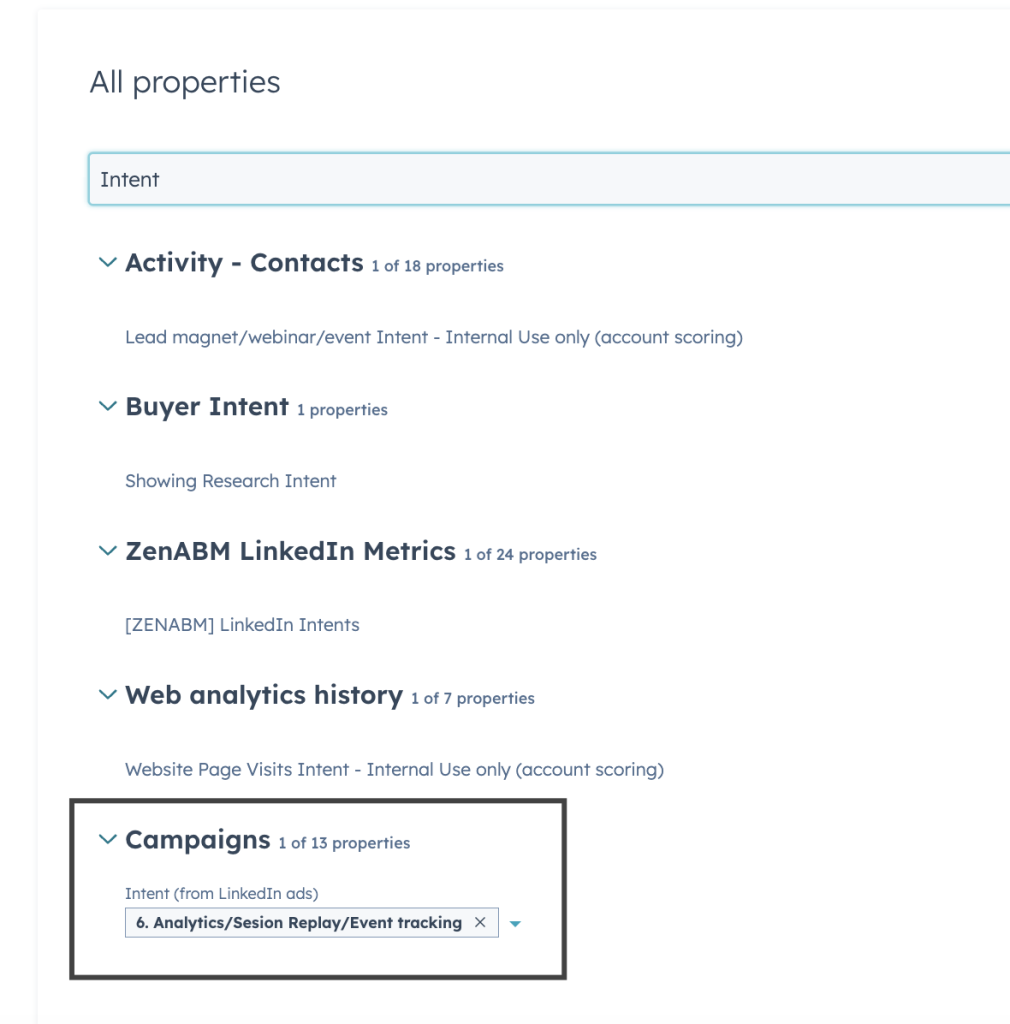
Stage tracking is available, and you can define thresholds for each stage: 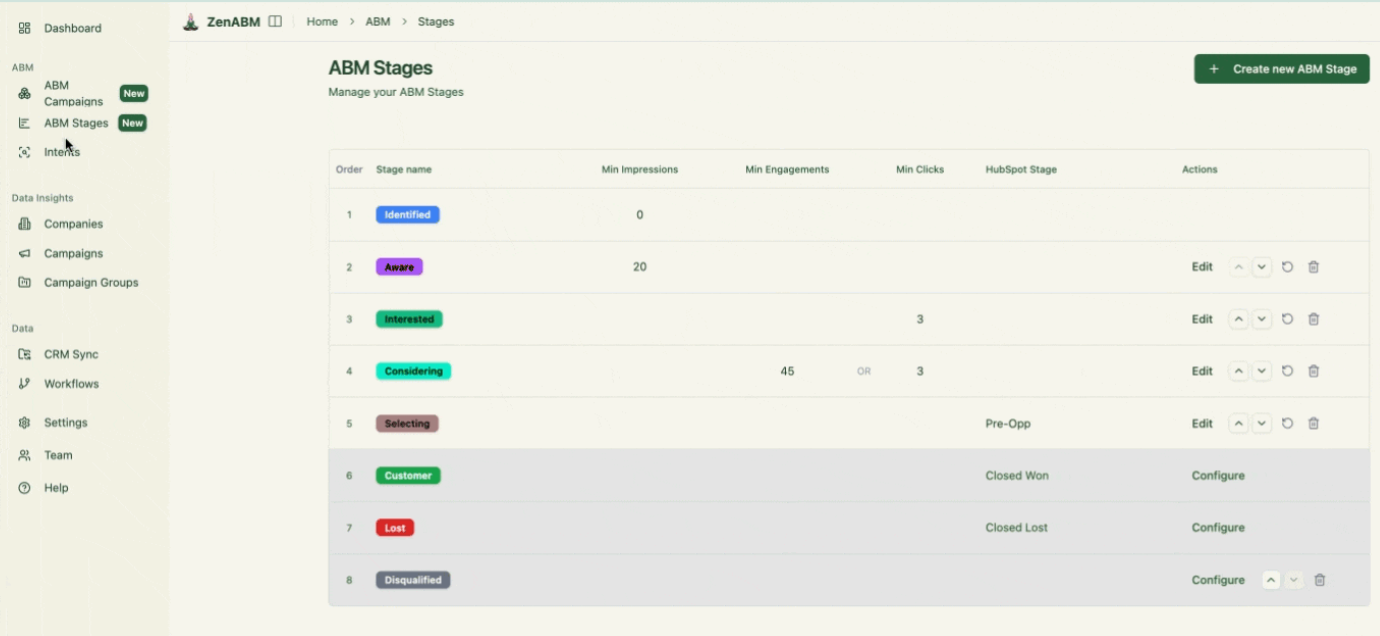
Use ZenABM to export lists of companies that engaged with each campaign or use case. Then retarget those accounts with relevant ads or personalized outreach.
In this guide, we explored seven tactical and successful B2B SaaS examples of ABM, each with actionable steps you can replicate.
From Snowflake’s premium mailers to Salesforce’s intent-led healthcare motion, Adobe’s AI personalization, Engagio’s cross-channel orchestration, Drift’s conversational chat, DocuSign’s industry paths, and LiveRamp’s high-touch outreach, each play proves that focused account execution can move the pipeline meaningfully.
The takeaway is simple. Effective ABM depends on deep personalization, precise account selection, and tight sales and marketing alignment. Tools like ZenABM enhance these examples of ABM with solid attribution and CRM sync.
Now it is your turn. Pick the motions that match your B2B goals and put them to work.